Gustav Adolf was the Swedish king. Born December 9, 1594 in the Swedish town of Nikeping. His parents were Charles IX and Christina Holstein. What is interesting about the personality of King Gustav II Adolf of Sweden to contemporaries? What fruits did his rule bring to the country? What methods did he use? Read about all this and more in the article.
Short biography
Gustav 2 Adolf was one of the largest military leaders of that time. This man was an excellent leader. He improved the organization and armament of his army, and some of his principles are still valid today. Gustav significantly strengthened Sweden's position in Europe. He was fluent in five languages. In science, he preferred history and mathematics. Professionally engaged in horseback riding and fencing. The favorite authors of the king were Seneca, Hugo Grotius and Xenophon.
Father took him to meetings of the State Council from the age of eleven. ATtwelve years Gustav Adolf had already begun to serve in the army under the rank of lower rank. And in 1611, during the war with Denmark, he received a baptism of fire. The king had the nicknames "Snow King" and "Northern Lion". He was also nicknamed "The Golden King" for his golden hair color.
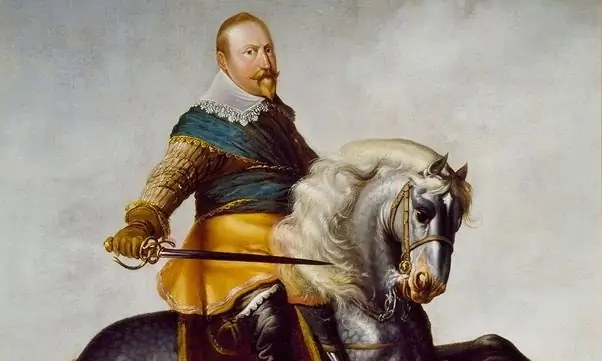
Gustav was a tall and broad-shouldered man. He was very fond of the color red in clothes. He was immediately noticed by officers and soldiers. He was not only the king, but also the commander-in-chief, who leads the army to battle and takes part in it himself. He wielded several types of weapons, such as a pistol, a sword, and a sapper's shovel. Gustav, along with his soldiers, was starving, freezing from the cold, walking in short boots through mud and blood, sitting in the saddle for half a day. Gustav was still a gourmet and was very fond of delicious food, because of which he became very stout, was not very agile and quick.
Family
Gustav's father was King Charles IX of Sweden (1550-1611). In 1560, Charles IX took possession of the duchy. And in 1607 he was crowned under the name of Charles IX. He died in 1611. Gustav's mother was the second wife of Charles IX, Christina of Schleswig-Holstein-Gottorp (1573-1625). She was Queen of Sweden from 1604 to 1611. Gustav's parents married on August 22, 1592. After the loss of her husband and son, Christina retired from public affairs.
Private life
King Gustav Adolf II of Sweden since 1620 was married once to Mary Eleonora of Brandenburg. The couple had two daughters. Christina Augusta lived only a year, from 1623 to 1624. The second daughter, also Christina, was born on 8December 1626. From the very birth, girls in Sweden have been told that if her father dies without male heirs, then she will inherit the throne.
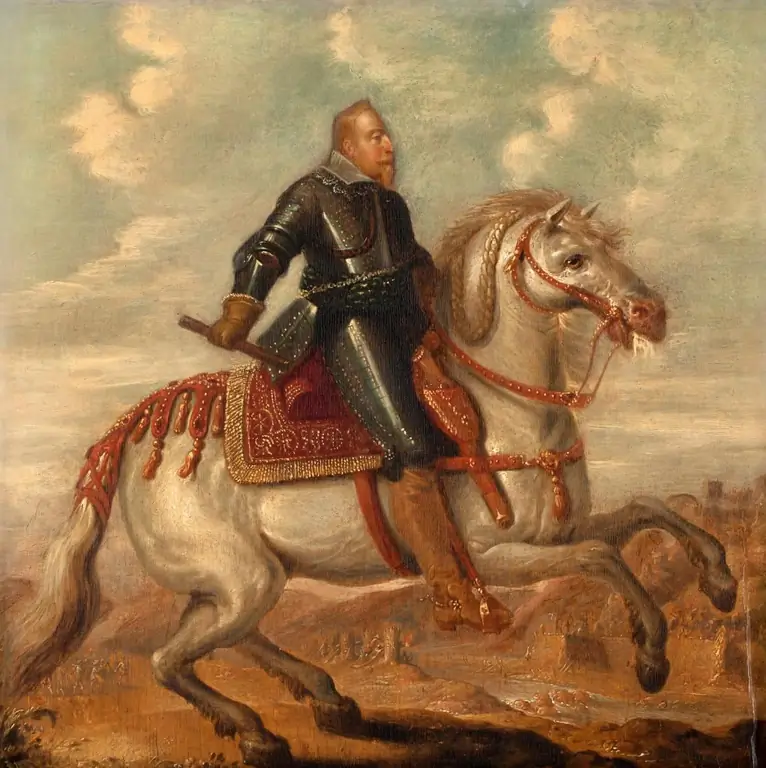
From an early age, Christina was already titled queen. According to the girl, her father doted on her, and her mother hated her with all her heart. Due to the fact that Gustav Adolf died in 1632, and her mother lived in Germany until 1633, Christina was raised by her aunt, Countess Palatine Catherine. Christina could not get along with her mother when she returned to Sweden, so she moved back to her aunt in 1636.
Christina began to rule independently in 1644, after she was recognized as an adult. Although she began attending meetings of the Royal Council as early as 1642. Christina abdicated the crown in 1654. In addition to two daughters, King Gustav II Adolf also had an illegitimate son, Gustav Gustavson of Vasaborg.
Board
When Gustav II Adolf of Sweden came to power, after the death of his father, three wars were transferred to him at once - with Russia, Poland and Denmark. Gustavus Adolphus did not recognize the aristocracy and lured them away, giving them numerous advantages and promising to discuss their actions with the government. The king hit first on Denmark, then on Russia, but then made peace with it, and then attacked Poland.
War with Denmark
King Gustav 2 Adolf, whose brief biography is presented to your attention in the article, completed hostilities with Denmark on January 20, 1613 with the Treaty of Knered. The ruler bought the Elvsborg fortress forSweden.
War with Russia
The conflict between Sweden and Russia began under Gustav's father. The purpose of the war, which began in 1611, was to block Russia's path to the B altic Sea and appoint Charles Philip as the Russian ruler. At first, Sweden was successful and captured several Russian cities, including Novgorod. But then the failures began. The Swedes failed to capture Tikhvin, the Tikhvin Assumption Monastery and Pskov. Moreover, the capture of Pskov was led by Gustav II Adolf himself.
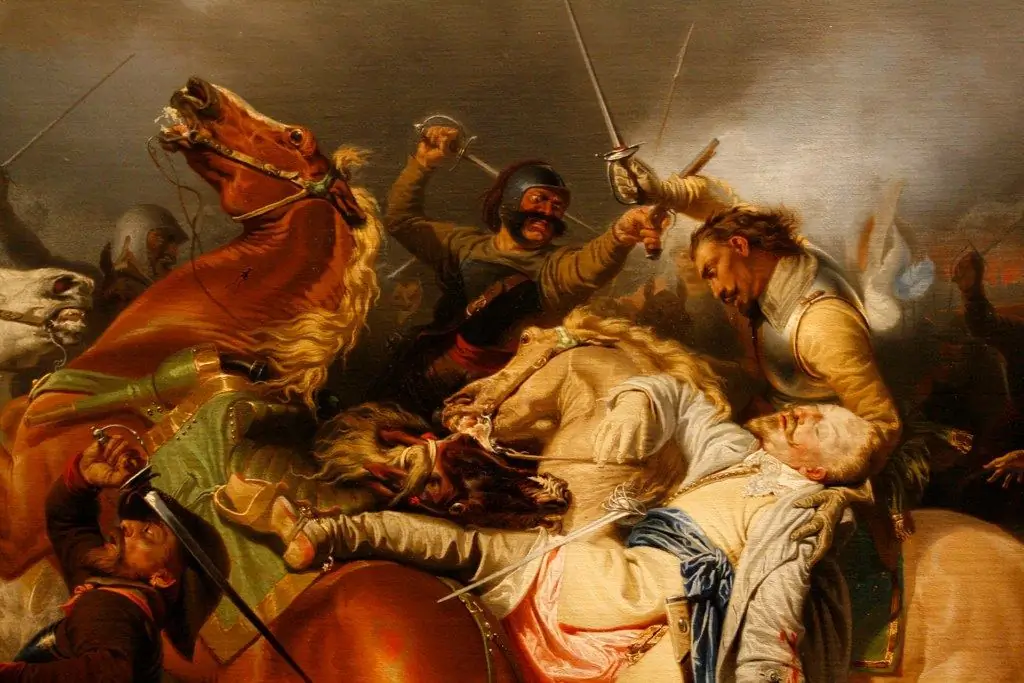
The war ended on February 27, 1617 with the signing of the Stolbovsky Peace. As a result of the agreement, the Swedes received several Russian settlements, for example, Yam (now Kingisepp), Ivangorod, the village of Koporye, Noteburg (Oreshek fortress) and Kexholm (now Priozersk). Gustav was very pleased with the successes he had achieved, and said that since the Russians were now separated from them by different waters, they could not reach Sweden.
War with Poland
After the end of the war with Russia, Gustav turned his attention to Poland. The war on the lands of Poland took place until 1618. After a couple of years of truce, Sweden conquered Riga, and Gustav signed a number of privileges for the city. During the second truce, which lasted until 1625, Gustav took care of domestic affairs and improved the army and navy. Several countries contributed to reconciliation with Poland, such as France and England. They promised to reconcile the two countries in exchange for Sweden taking part in the German war. As a result, in 1629, Poland and Sweden signed a truce for a period of six years.
Thirty Years' War
In 1630, King Gustav II Adolf of Sweden entered the Thirty Years' War. A confrontation began due to disagreements between the Protestant and Catholic lands. He was motivated by political and religious reasons. Gustav created an alliance of Protestant princes, where he was a key hero. A huge army was taken away with the help of funds that were collected in the conquered lands.

The Swedish army captured a very large part of Germany, and the Swedish king Gustav II Adolf began to think about how to carry out a coup in the German territories. However, he never realized his ideas, since in November 1632 the king died in the Battle of Lützen. Although Sweden participated in the war for only a couple of years, its contribution to the war is very significant. In this confrontation, Gustav resorted to unusual tactics and strategies, thanks to which he entered this era as a hero, and the German Protestants still revere him. The result of the war in 1645 was the unconditional victory of the Swedish-French army, but the peace treaty was signed only in 1648.
The first connections of Gustav II Adolf with Germany
For the first time, being in an agreement with the captured city of Stralsund, Gustav delved into the affairs of Germany. The king ordered the German ruler to withdraw troops from Upper and Lower Saxony and from the coast of the B altic Sea. He also demanded that certain German rulers be given back their privileges and advantages. Having been refused, in response, Gustav ordered the Swedish army to capture the island of Rügen. On July 4, 1630, the Swedish fleet landed its army, which includedincluded 12, 5 thousand infantry and about 2 thousand cavalry, on the island of Usedom.
The king began to strengthen his position along the perimeter of the coast. Having captured the city of Stetin, he made it a warehouse, and then organized several expeditions to the east and west to the regions of Pomerania and Mecklenburg.
On August 23, 1631, the Swedish king signed an agreement with France, which stipulated that the French were obliged to make annual payments to Sweden for the conduct of hostilities. On April 26, Gustav II Adolf captured Frankfurt an der Oder and Landsberg. Johann Tserclaes von Tilly was unable to defend Frankfurt and began the capture of Magdeburg. Gustav was unable to come to the rescue, as he was in negotiations, and he only received a notification about what was happening in that territory.
After that, Gustav sent his army to the German capital Berlin and forced the Elector of Brandenburg to sign an alliance treaty. On July 8, the army of Gustav II Adolf left Berlin and, having crossed the Elbe River, settled in the Verbena camp. Next, Gustav made an alliance with the Saxon army, and they headed for Leipzig.
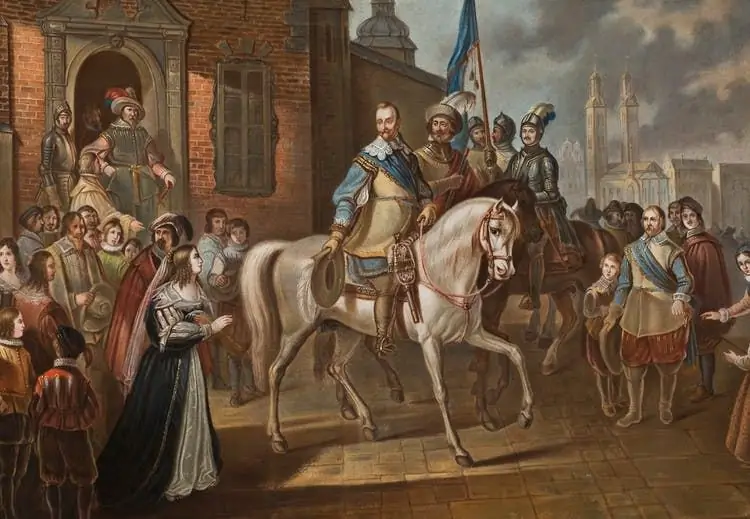
September 17, 1631, the Swedish army defeated the imperial troops at the Battle of Breitenfeld. The Imperials lost about 17,000 men. The victory in this battle raised the popularity of the Swedish king and led to the transition of many Protestants to his side. Further, the Swedish army moved to the Main in order to attract new allies. Thanks to this strategy and acquired allies, Johann Tserclaes von Tilly was cut off from Bavaria and Austria. After a siege that lasted fourday, the Swedish military captured Erfurt, Würzburg, Frankfurt am Main and Mainz. Seeing these victories, the inhabitants of many cities in southwestern Germany went over to the side of the Swedish army.
At the end of 1631 and at the beginning of 1632, the Swedish king Gustav II Adolf negotiated with European countries and prepared for a decisive campaign against the empire. Further, when the Swedish army numbered about 40,000 people, Gustav gave the order to advance on Till. Upon learning of the advance of the Swedish army, Till fortified his position near the city of Rhein. For the first time in history, Gustav's army made a forced crossing and pushed the enemy back from the city.
Development of Sweden
Gustav II Adolf always knew that in order for Sweden to become stronger, you need to use natural resources. But this required funds that the country did not have. The king attracted foreigners to invest in the development of the metallurgical industry. In this matter, Gustav was very lucky. Foreign entrepreneurs came to the country and stayed there because of cheap labor, excess water and other factors. The created industry allowed Sweden to start trade relations for export.
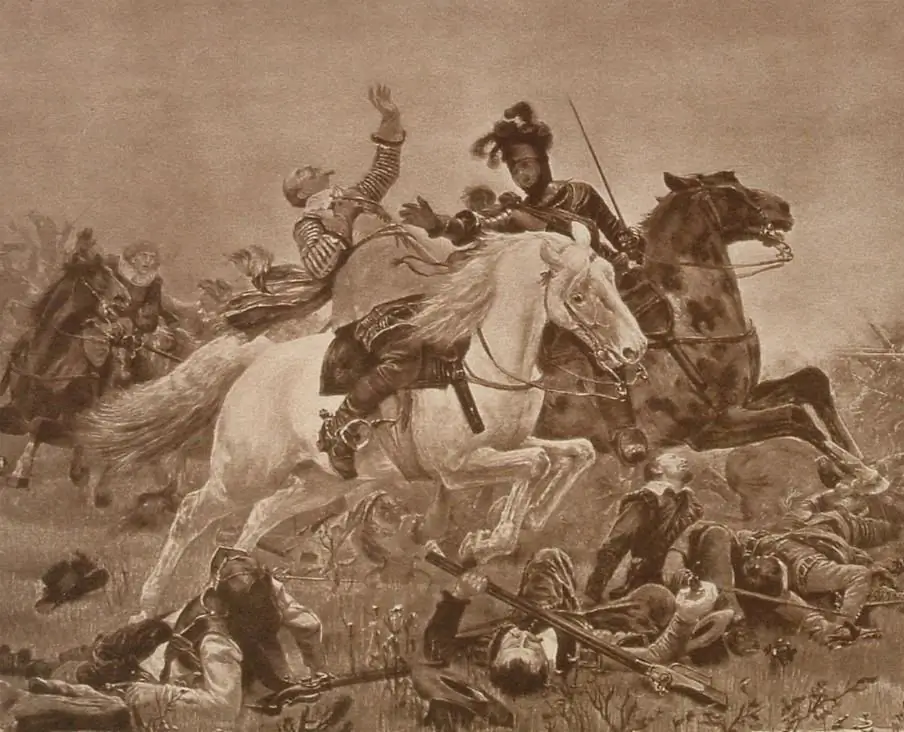
In 1620, Sweden was the only country in Europe that sold copper. The export of copper was the main source of development for the army. Gustav also wanted to replace taxation in kind with cash. The king was very concerned about the improvement of the army. He changed the conscription system, trained the army in new tactics of warfare. He created a new weapon thanks tohis knowledge of gunsmithing.
Date and cause of death of the king
By autumn, the Swedish king Gustav II Adolf began to suffer some defeats. In November, the Swedish army launched an offensive towards the city of Lützen. There, on November 6, 1632, Gustav II Adolf was killed after an unsuccessful attack by the Swedish army on the imperials. So tragically ended the life of the great commander and ruler of Sweden.
Interesting facts
Finally, I would like to note some interesting facts from the life of the Swedish King Gustav II Adolf:
- Napoleon considered the Swedish king the great commander of antiquity.
- In 1920, the Swedish Post issued a stamp with a portrait of the Swedish King Gustav II Adolf. In 1994, the Estonian Post issued the same stamp. Monuments to Gustav II Adolf erected in Stockholm and Tartu.
- The great general's strategy planning methods were used until the 18th century.
- During his reign in Sweden, Novgorod boyars offered him the throne in Russia.
- Until now, on November 6, the national flag is raised in Sweden in honor of Gustav II, who is considered a significant person in the country.
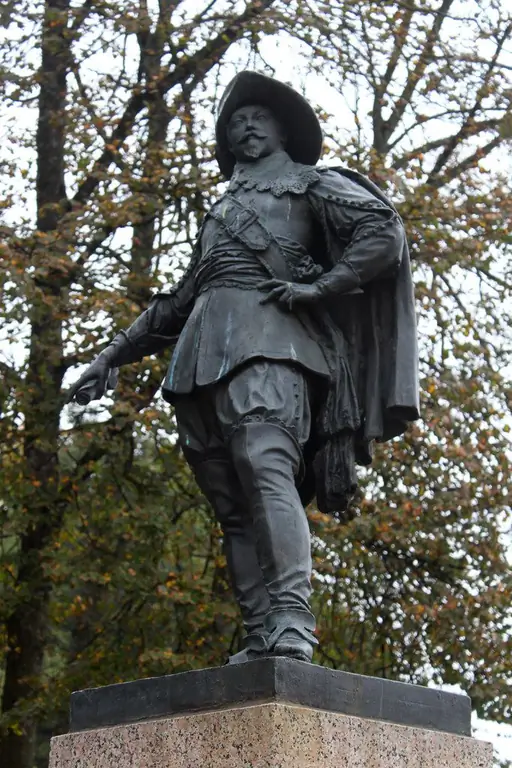
Conclusion
The life of Gustav II Adolf was not very long, but very eventful. He reigned for twenty years, and this period is very important for the history of Sweden and the whole world. Gustav was very educated and spoke five languages. He is remembered in history as a great commander and organizer of the army. He established a new salary for the troops. Thanks to this, cases of theft have decreased in the armies. Gustav always carefully prepared for wars and was an example to follow. He improved the Swedish economy and its public administration. Gustav II Adolf simplified the taxation system and entered into trade cooperation with Spain, the Netherlands and Russia. He founded a university in Tartu and a gymnasium named after himself in Tallinn. In the last year of his life, he ordered the founding of the city of Nien on the banks of the Okhta River.






